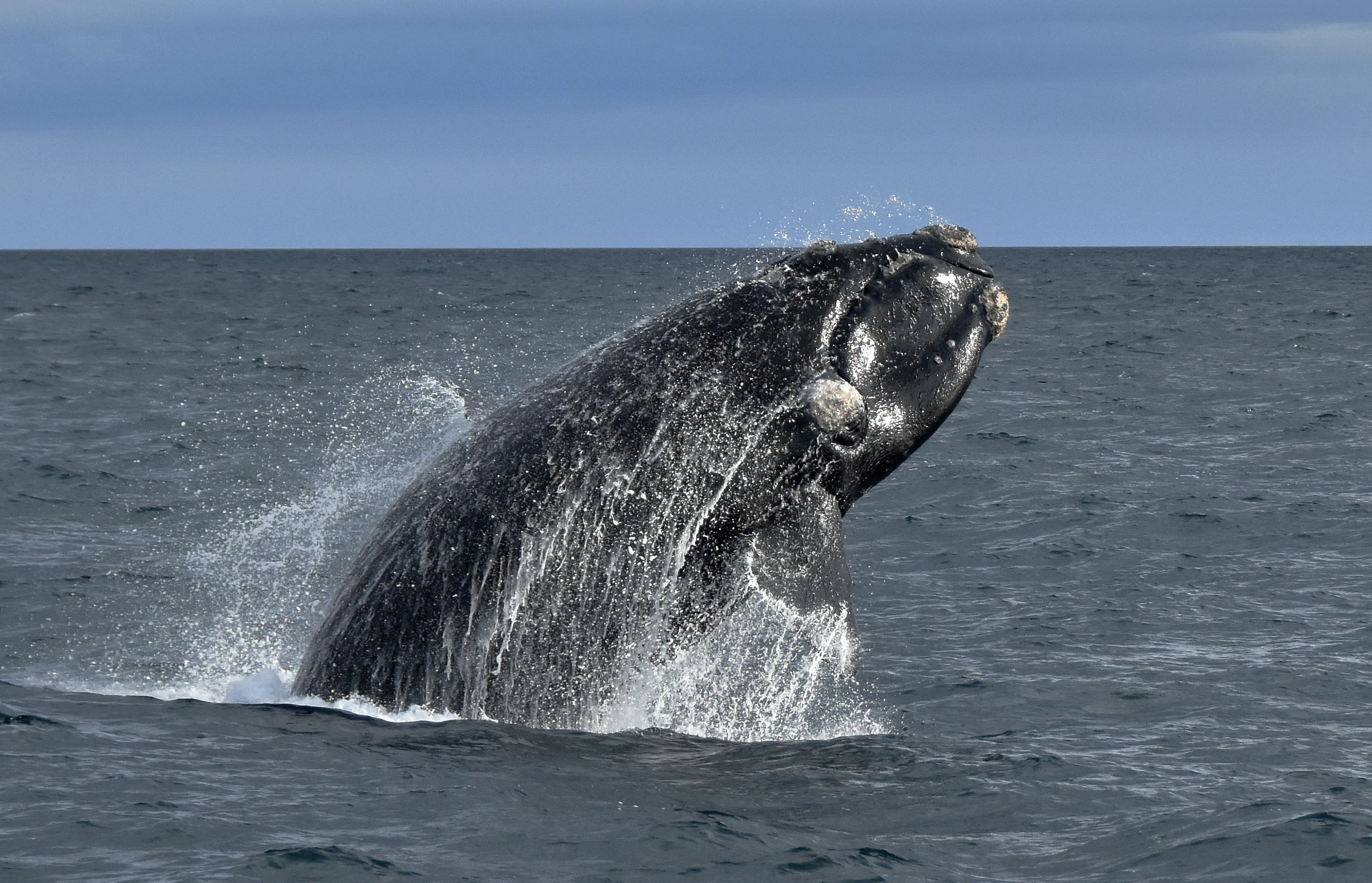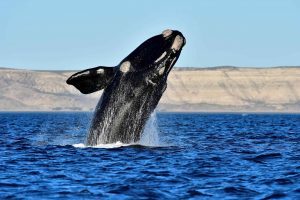The calving season of the North Atlantic right whale has left alarming figures. Only 11 calves were recorded this year, far from the 50 needed for the species to begin recovering. With a population of just 370 individuals, this species is on the brink of extinction.
Scientists and conservationists warn that the situation is critical. The reproduction of these whales has decreased drastically in recent years, which could accelerate their disappearance if urgent measures are not taken to protect them.
Every year, the whales approach the waters off the southeast United States between November and April to give birth. However, the low number of births this season reflects the growing threats facing these cetaceans in their natural habitat.
One of the main risks for the species is entanglement in fishing gear and collisions with large vessels, dangers identified due to climate change and the alteration of their migratory routes.
 Whale watching on the Buenos Aires coast.
Whale watching on the Buenos Aires coast.
The hostile environment hindering the reproduction of the North Atlantic right whale
In addition to physical impacts, the marine environment is increasingly saturated with noise, traffic, and pollution, factors that generate chronic stress in North Atlantic right whales. This stress can directly affect their reproductive capacity.
Despite the bleak outlook, some scientists maintain a glimmer of hope. Four females gave birth for the first time this year, indicating that there is still reproductive potential in the population.
Currently, only about 70 females of breeding age remain, an extremely low number to ensure the long-term survival of the species. The slow pace of reproduction worsens the situation, as these whales only give birth every three years or more.
For centuries they were hunted to near extinction. Although they have been protected for decades, the current marine environment does not provide the minimum conditions necessary for their recovery.
Their annual migration north in search of food in the waters of New England and Canada exposes them to new threats, moving them away from protected areas. Every calf counts, and without an immediate change in their environment, North Atlantic right whales could disappear from the ocean in a matter of decades.

Conservation Measures in the United States
In recent decades, the United States has implemented various strategies to protect the North Atlantic right whale, a species critically endangered. Among the initial actions are restricted navigation zones, which require vessels to reduce speed in key areas during the calving and migration season, thus reducing the risk of fatal collisions.
Additionally, modifications to fishing gear were adopted to prevent entanglements. This includes the use of less dangerous fishing lines or even the development of ropeless technologies, as well as the creation of temporarily closed fishing areas when whales are spotted in the region.
Scientists also actively participate in monitoring and satellite tracking programs, which allow for real-time knowledge of the location and behavior of these cetaceans. This information is crucial to adjust protection measures based on population movements, especially in the face of environmental changes that alter their traditional routes.
Finally, federal authorities, in collaboration with NGOs and research centers, promote education and awareness campaigns targeting coastal communities, fishermen, and shipping companies. These initiatives aim to raise awareness about the fragility of the species and promote responsible coexistence with the marine ecosystem.

